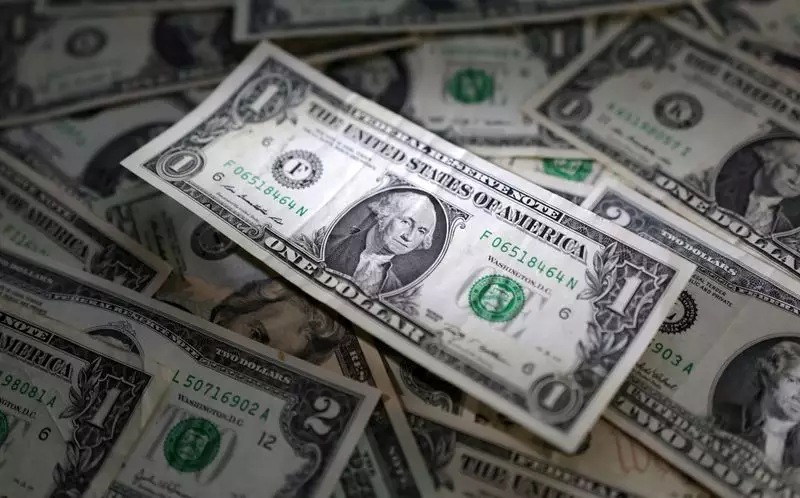In the ever-evolving landscape of global finance, currency values can hinge on a variety of factors. One recent trend has been the dollar’s slight retreat after an extended period of gains, driven by investor sentiment surrounding the appointment of a new U.S. Treasury secretary. The implications of such developments on the bond market and currency values offer a rich area for analysis, particularly in the context of ongoing economic dynamics.
When President-elect Donald Trump announced his selection of Scott Bessent as U.S. Treasury Secretary, the bond market reacted positively. Bessent, known for his conservative fiscal background and extensive experience on Wall Street, was expected to instil a sense of certainty among investors. However, the immediate reaction was somewhat paradoxical; despite initial optimism surrounding Bessent’s appointment, the dollar took a step back. This counterintuitive response can be largely attributed to investor expectations that the new appointee might promote a more robust fiscal policy that could temper aggressive dollar gains.
Ray Attrill, head of FX research at NAB, encapsulates this sentiment by expressing his surprise at the dollar’s weakening, given Bessent’s pro-strength dollar stance. This highlights a nuanced interpretation of the currency’s fluctuations; although Bessent supports a strong dollar, the market’s interpretation of his fiscal conservatism could signal a temporary stabilization in dollar values rather than perpetual growth.
The Role of Economic Indicators in Currency Performance
At the heart of the dollar’s recent retreat is its prolonged uptick, having experienced an eight-week rally that only occurs sporadically within the context of economic history. With such an upward trajectory, technical indicators began to show signs of overbought conditions, suggesting that a short-term correction was not only possible but likely. As the U.S. dollar index retreated to 106.950, down from a peak of 108.090, it is evident that markets are recalibrating, which may stem from both technical and macroeconomic factors.
The backdrop of contrasting economic performances between the U.S. and Europe played a significant role in shaping these dynamics. While U.S. manufacturing surveys indicated growth, their European counterparts portrayed a dismal picture, leading to declining European bond yields and enhancing the dollar’s attractiveness. Hence, market reactions not only pivot on political changes but also on tangible economic data that serves as a barometer for currency fluctuations.
Market Predictions: Diverging Monetary Policies
Looking ahead, expectations for central bank policies have notably shifted. The European Central Bank (ECB) is now perceived as likely to embark on more aggressive easing measures, with a 59% probability forecasted for a half-point rate cut in December. In contrast, the Federal Reserve’s anticipated quarter-point cut probability dwindled to 52%, reflecting diverging monetary strategies that could exert additional pressure on the dollar.
These monetary policies directly impact currency strength. If the ECB implements aggressive easing while the Fed maintains a cautious stance, the resulting currency dynamics could favor the dollar in the short to medium term. Nevertheless, the market’s perception around Bessent’s influence and the potential for improved fiscal policies may complicate such projections.
Adding another layer of complexity to the financial milieu is the cryptocurrency sphere. With Bitcoin recently encountering profit-taking amid its ascent towards the $100,000 mark, the interdependence of traditional currencies and digital assets is more apparent than ever. Bitcoin soared over 40% following Trump’s election victory, largely due to the anticipation of a more conducive regulatory environment for cryptocurrencies. This burgeoning market not only highlights the shifting paradigms of finance but also the potential volatility that could spill over into global currency valuations.
The intersection of traditional currency trading and digital asset dynamics indicates a critical juncture for investors and policymakers alike. As the dollar and other currencies engage with cryptocurrencies in the broader financial ecosystem, the implications for monetary policy, regulations, and investment strategies are profound.
The recent fluctuations in the dollar’s value highlight a complex interplay of leadership changes, economic indicators, and market expectations. While initial reactions to Bessent’s appointment suggested a temporary consolidation for the dollar, ongoing developments within U.S. and European economic landscapes and diverging monetary policies will continue to shape the outlook for the currency. As investors navigate this landscape, the dual influence of traditional and digital currencies will undoubtedly signal new pathways for financial strategies and economic forecasts.

